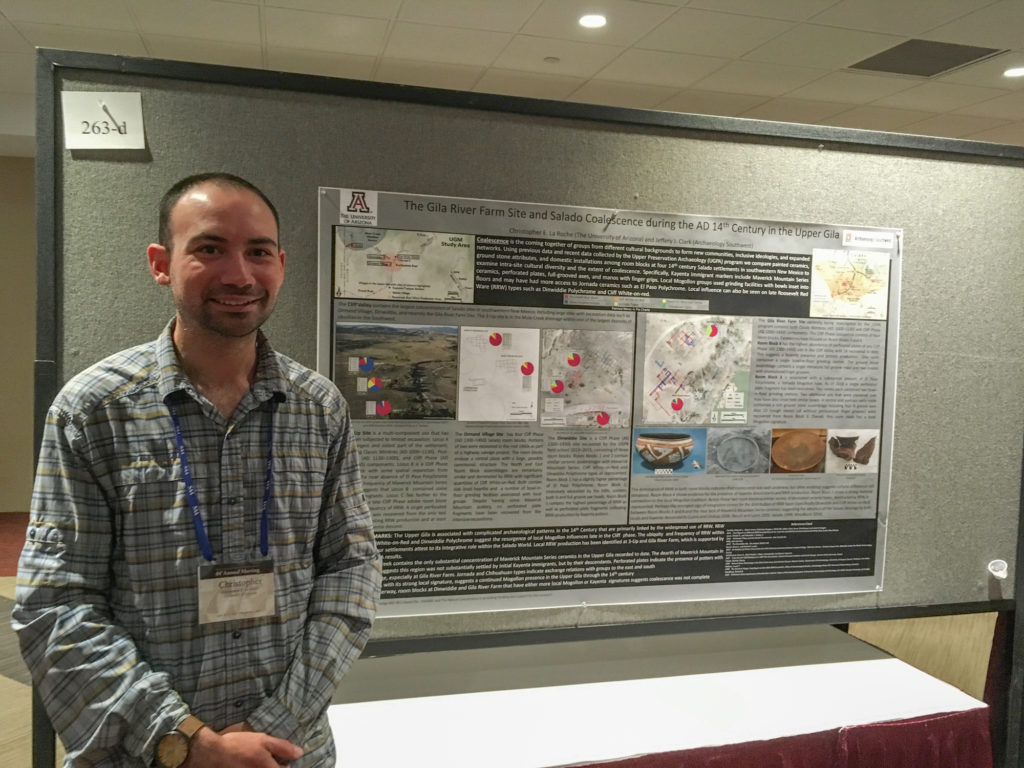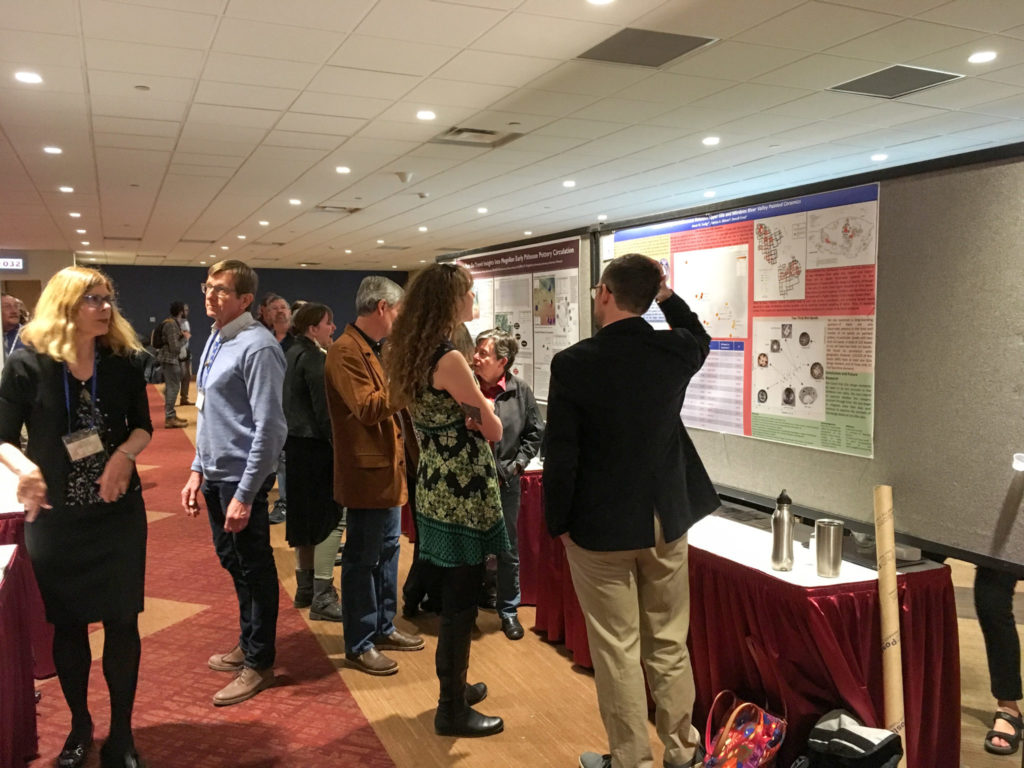- Home
- >
- Preservation Archaeology Blog
- >
- Archaeology Southwest at the SAAs
Sara Anderson, Director of Outreach
(March 31, 2022)—It’s the end of March, and for some that signifies the transition from winter to spring. For others, it represents that pesky “spring forward” time change—luckily not for many Arizona residents. For us here at Archaeology Southwest and for many archaeologists across the country, it means an annual meeting of the Society for American Archaeology.
This is the 87th year of this conference, wherein the archaeological community comes together to share ideas, discuss archaeological practices, and present scientific innovations. This year, it’s being held in person in Chicago after two years—in 2020, like so many events, the conference was canceled, and in 2021, it was held virtually.

This week we’ve been running around adding last-minute touches to our PowerPoints and planning our jam-packed day of sessions, posters, and meetings before our long weekend. Not only are some staff members attending and presenting, but one of our most dedicated volunteer citizen scientists—woohoo, Jaye!—will be presenting, as well as our students from previous Preservation Archaeology field schools.
Some field school alumni will be presenting original research at a professional conference for the first time—what an accomplishment! We’re grateful to the National Science Foundation (NSF REU-1560465) for supporting their attendance and helping the next generation of archaeologists gain a strong foundation in scientific research.

Preparation for the annual meeting can have some unintentional side effects, though—late-night work, presentation anxiety, and travel fatigue. The meeting itself provides a backdrop for an event that feels similar to a school reunion where you run into colleagues and friends you haven’t seen in years or even decades. It allows us to not only share our ideas and our methodologies, but also reinvigorate projects or plans that have been sitting in the recesses of our minds and desks.
So, the side effects of preparing for this meeting can sometimes paralyze us. And yet, the richness of this experience, which exposes us to new archaeological voices and outstanding projects, allows archaeologists to cultivate new and more nuanced understandings. That revitalizes us to return with new ways of thinking, new friendships and colleagues, and a drive to dust off projects left on the back-burner—or literally on our desks. (P.S. I’m new here. No dust.)
A list of our presentations and posters are listed below. If you’re attending, please stop by and say hello! See this year’s program for abstracts and specific times and rooms of presentations and posters. We are truly honored to share our work with you all, and we look forward to discussing it. And if you can’t join us in person, stay tuned to our socials and our webpage for the posters to be uploaded after the meeting.
UPDATE: Read Karen Schollmeyer’s recap of the meetings here.
Thursday, March 31
Jaye Smith and Jeffery Clark
Continued Work on the Ray Robinson Collection: The Elmer’s Farm and Layton Field Sites in the Safford Basin, Arizona. In the paper session “Ancestral Puebloan Archaeology.”
Aaron Wright and Myles Miller III
The Question of Mesoamerican Deities in the Indigenous Pantheons of the Southern Southwest. In the symposium “Analyzing and Reanalyzing the Connectivity between the Southwest/Northwest and Mesoamerica.”
Friday, April 1
Karen Schollmeyer
Animal Remains in Ceremonial and Communal Spaces in the Mogollon Area of the US Southwest. In the paper session “Zooarchaeology: Beyond Human Subsistence.”
Karen Schollmeyer
Strategies for Getting an NSF Grant
Committee on the Status of Women in Archaeology (COSWA) mentoring round table host.
Saturday, April 2
Paul Reed and Theresa Pasqual
The Pueblo of Acoma’s Connections to Salmon, Aztec, and the Middles San Jan Region. In the symposium “New Perspectives for Chaco Outlier Research and Advocacy.”
Poster session, “Mogollon Area Archaeology: Mimbres, Salado, and In Between.”
Organizers: Karen Schollmeyer and Jeff Clark
Sam Rosenbaum, Construction and Settlement Patterns at the Gila River Farm Site
Kathrine Taylor, Diversifying and Decolonizing
Beatriz Barraclough-Tan, Braided Together: Combining Different Sandal Technologies in Salado Material Culture
Lewis Dolmas, Distributions of Axe Head Styles at Salado Settlements
Gabby Pfleger, Rebecca Harkness, and Allen Denoyer, An Experimental Comparative Analysis of Classic Mimbres and Salado Pottery
Sunday, April 3
Bill Doelle
Unfinished Business: Facilitating Synthetic Research by Expanding Access to Digital Databases. In the symposium for “Early Cultural Resource Management Firms: Voices from the Past and Present.”
John Welch
Are Spaces between Places Also Places? Ancient Trails, Regional Interconnectivity, Negative Data, and Experiential Landscape Archaeology in the Arizona Transition Zone. In the symposium “Fresh Perspectives on the Arizona Transition Zone.”